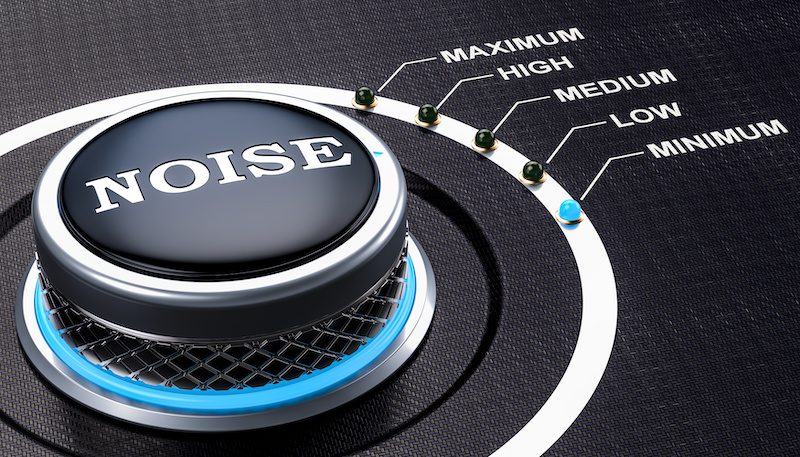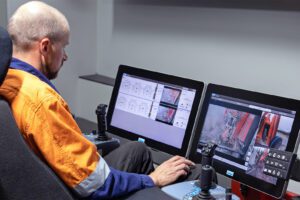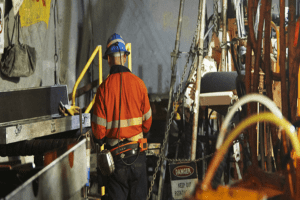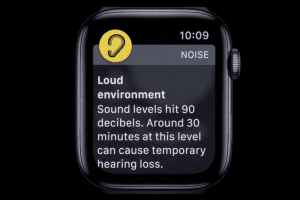We live in a noisy world of traffic, urbanisation, machinery, electronic devices and recreational activities. All these contribute to a background level of noise we experience whilst away from work. Coupled with exposures to a wide variety of noisy work situations, it is not surprising that noise is one of the most significant global stressors on occupational health. Noise-induced hearing loss has a high impact in the community.
High levels of occupational noise remain a problem in all regions of the world. In 2001–02 the Australian Safety and Compensation Council estimated that 10.5–12% of the entire workforce was exposed to excessive noise.
The National Hazard Exposure Worker Surveillance (NHEWS) survey conducted in 2008 found respondents who worked in the Mining and Manufacturing industries were the most likely to be exposed to loud noise with 68% of workers in mining reported some level of exposure. The duration of daily exposure in mining was also the highest; on a typical day, those who worked in mining were exposed to loud noise for an average of 7.3 hours.
READ RELATED CONTENT
- The why and how of critical risk management
- Ears to the ground | noise control in the mining industry
- Managing regulatory capture in mining
- What is mining safety?
A quick review of noise exposure data collected by GCG predominantly in the resources and heavy manufacturing sector is shown in Figure 1. The red line is the current exposure standard of 85dBA, whilst the grey line is the unchanging average exposure for each year. The yearly bell curves show the frequency distribution of results with evidence of a progressively increasing number of exposure assessments. Unfortunately, the average noise exposures in this data are not declining.
The effects of exposure to noise are many, apart from noise-induced hearing loss. Table 1 contains an extract from Safe Work Australia report3 referring to the non-auditory effects
The NHEWS survey found that personal hearing protectors (PHPs) were the most common form of control with 96% of respondents in the mining sector reporting use of earplugs. So why is noise-induced hearing loss still a problem4 for the mining industry?
One of the reasons workers often cite for not always using PHPs is that they interfere with warning noises and signals. An underlying theme related to the non-compliance with PHPs is the impression that hearing loss is neither painful nor life-threatening and is therefore not perceived to be serious. Also, the perception of dangerous noise levels is often difficult as an increase of 3 decibels is a barely noticeable increase but represents a doubling of noise energy.
Drawing on risk perception research, whether miners accept hazards such as occupational noise is related to the characteristics of the hazard which include the following:
1. the nature of the hazard (familiarity and experience of the risk, understanding of the cause-effect mechanism, degree of uncertainty, voluntary exposure to the risk, artificiality of the hazard)
2. the consequences of the hazard (geographically and across time)
3. fear of the consequences of the hazard
4. delayed effects (the prominence of the risk is a function of the delay in adverse consequences)
5. reversibility (potential to restore original state)
6. negative impact on the individual, social and cultural values
7. personal control over the risk, and
8. trust or distrust of institutional control of the risk.
In the case of noise and miners, quite a few of these boxes are ticked.
NOISE CONTROL
The approach to effectively control noise in the working environment is to first identify the noise sources and then follow the hierarchy of controls. By following the hierarchy, this ensures that all reasonably practicable steps have been explored to control noise exposure levels within the working environment.
These steps are as follows:
- Elimination;
- Substitution
- Engineering; (Prevention of noise transmission; isolation, absorption)
- Administrative; and
- Personal Protective Equipment or PHPs.
All the above controls can be applied to different types of environments, i.e. processing plants or underground mines. Noise control in mining environments has been the subject of extensive work6 and guidance material is readily available on the web7 8. One important aspect of noise control is to ensure all the different stakeholders work in synergy. This will assist in the correct execution of control measures and the sustainability of the control throughout the operation’s lifespan.
READ RELATED CONTENT
- New Guidelines Published for Autonomous Mining
- Exposure and control of noise in mining
- Noise-induced hearing loss | causes and prevention
- Noise control | Are we succeeding?
Eliminating noise seems like an unlikely control in mining, but a simple example is as basic as identifying unnecessary noise sources that can be switched off when there is no need for them at a certain point of time in the production cycle. e.g. isolating air reticulation sections that aren’t in use. The use of compressed air is one of the most common sources of noise exposure and simple solutions such as the installation of upgraded silencers capable of handling the volume of discharged air is useful in reducing peak noise events9.
Compressed Air is used for many applications, one of the most common being to move liquids or blow away materials, in these situations low noise nozzles on air guns and knives can reduce noise levels by as much as 25dB.
Engineering controls can be effective in reducing noise but may require capital expenditure or detailed engineering designs and OEM approvals. At the other end of the spectrum, it can be as simple as isolating vibrating equipment or performing additional maintenance to keep equipment running as smoothly as possible. Affixing flexible damping layers or noise absorption/barrier materials to noise generating surfaces is another inexpensive form of engineering control.
Separation is in most cases the most effective means of reducing noise exposure. This does not necessarily involve complex engineering controls and process alterations and may involve the installation of a simple barrier, or relocation of the source or the receiver. The most commonly applied form of isolation control is the use of enclosed cabins to isolate the worker from the noise. These are successful if sealing is maintained and the transmission of vibration into the cab is limited.
Administrative control measures which should be considered include rotating workers through low noise tasks and buy quiet policies10 11 to replace noisy equipment with lower noise generating options.
Regular hearing conservation training and maintaining the motivation of workers to wear hearing protection12.
PPE is the last resort and if decided on it should be accompanied with a fit testing program to ensure the effectiveness thereof. Different workers will also require different types of hearing protectors, and dependant on the noise source different noise reduction ratings.
There is no silver bullet to control noise and requires a skilled occupational hygienist working with engineers and affected employees to provide a custom solution for each site.
Case Study – Underground metalliferous mine
Challenge
Underground metalliferous mine exploration drill cuddy. The average noise exposure for these people is 96dBA. The environment is acoustically highly reverberant, there is little in the way to absorb generated sound and in a closed environment, plus sound waves bounce off the rock surface creating a near uniform noise level
Solution
The noise levels generated by the drill, power packs and associated equipment, when measured close to the equipment (called near-field noise), should decrease by 1/2 for every doubling of distance from the source. The general background noise (called far-field noise) is a combination of all the near-field sources, their varying distances from the receiver and the extent of reflected sound waves from the sources.
By employing architectural acoustic principles and decreasing the reverberation on the cuddy, noise exposures from the can be reduced significantly.
Installing a total of 24 industrial sound absorbing panels to either the walls or hung from the roof in an offset-checker board pattern on either wall and suspended from the roof in a staggered orientation results in a maximum reduction in noise levels between 12.7 and 19dB depending on the frequency. Practically, a reduction of approximately 10dB in noise exposure is achieved. The panels can be relocated to the next location when required.
Case Study – Zinc refinery
Challenge
Zinc refinery, casting department, Zinc Dust Operator exposed to daily average (LAeq,8h) noise above 110 dB(A). The Operator spends much of time in the quiet control room, but the source of noise exposure is hourly inspections of the zinc dust blower area where noise levels are ~120 dB(A)).
Solution
The company installed CCTV cameras in Zinc blower area to remove the need for operator inspections. Average daily noise exposure level reduced to less than 90 dB(A).
Case Study Hearing protection
Challenge
When all other controls aren’t enough.
Solution
Personal hearing protection done properly.
The selection of appropriate hearing protectors is based on the noise exposures experienced by workers and in accordance with AS/ NZS 1269.3 and not on the highest noise level measured13. The selection must consider the hazards created by over-attenuation, worker comfort and accessibility.
Once a series of hearing protectors is selected, it is critical that the wearers are fit tested to ensure the selected models provide the necessary level of attenuation for that specific individual. Studies14-16 have shown variability in the attenuation achieved by wearers and the relationship between manufacturers performance data and real-world levels of attenuation.
Combined with regular (1-2 yearly) audiometric testing and examination of individual hearing threshold trends17, significant deviations in hearing threshold can be halted in the resources industry18.
The take-home message… Noise control isn’t that hard…
By Peter Knott (MAIOH COH), Anthony Bamford (MAIOH), Hannes Steyn ~ GCG Health Safety Hygiene














Add Comment